As an Amazon Associate, I earn from qualifying purchases
If you’re looking for a beautiful, versatile, and easy-to-care-for houseplant, look no further than Caladium. These plants are Hardy in zones 9-11 and can be planted in the ground or in pots. In this article, we will discuss how to water Caladiums, where to plant them, what other names they go by, if they are good indoor plants, whether they come back every year or not, and if they are perennials.
We will also cover pests and diseases that can affect these plants. So read on to learn everything you need to know about growing Caladium!
What’s not to love about Caladiums? These hardy tropical plants can be planted just about anywhere and will thrive in both sun and shade. They are perfect for adding a splash of color to any garden, and can even be grown indoors as houseplants.
In this article, we will discuss everything you need to know about growing Caladiums, from planting to care to pests and diseases.
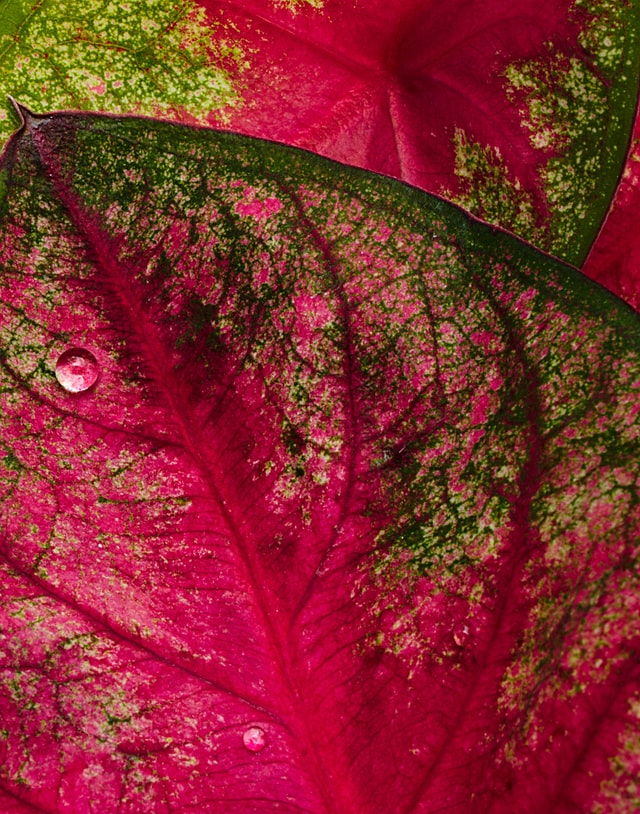
Photo by Michael Dziedzic on Unsplash
Caladium Care Guide
Origins of the Caladium plant:
Caladium plants are native to tropical regions of South America. There are many different species of Caladium, but most are grown for their colorful leaves.
How to water a Caladium:
Watering is important for keeping your Caladium healthy, and it can be done either by watering the soil directly or watering the plant itself. When watering the soil, be sure to water until the water begins to drain out of the bottom of the pot. You can tell that you’re watering enough when moisture appears on the leaves of the plant. It’s best not to underwater or over water your Caladium, so make sure to check the soil regularly and adjust your watering schedule accordingly.
Where to plant Caladium plants
When planting Caladiums, be sure to choose a spot that gets plenty of indirect sunlight. They will also grow in shaded areas, but will not bloom as well in the shade. If you are growing them indoors, place them in a sunny spot near a window, but not in full-on sunlight.
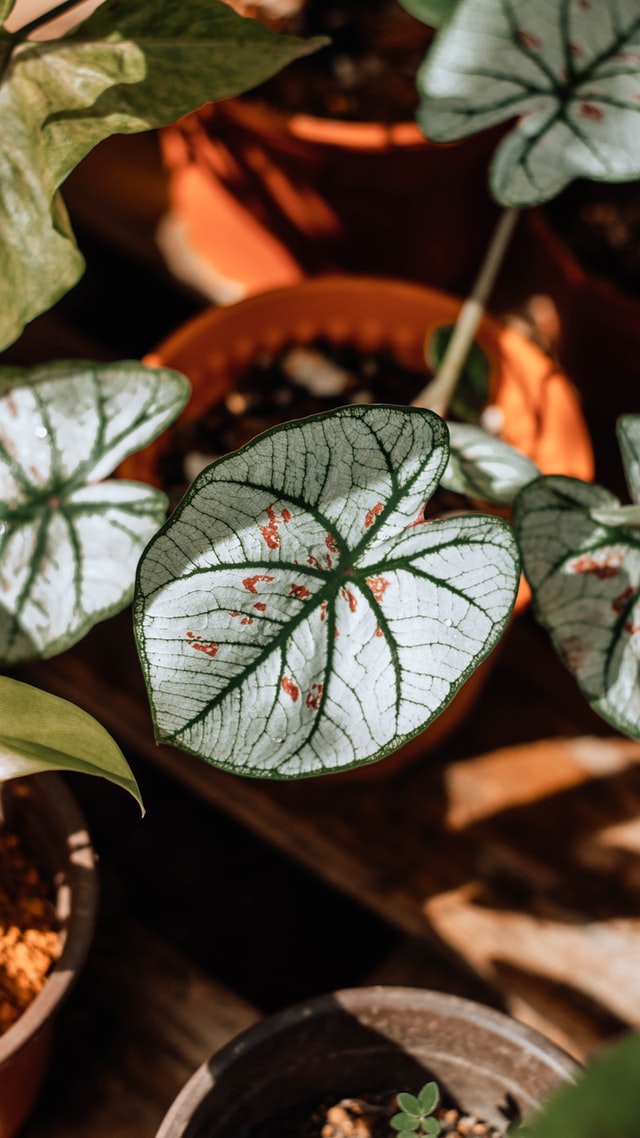
Photo by Jungle Space on Unsplash
Watering your Caladium
Water your Caladiums regularly, keeping the soil moist at all times. During hot weather, you may need to water them more often than usual.
Fertilizing Caladiums
Caladiums do not need a lot of fertilizer; in fact, over-fertilizing can actually be harmful. A light application of a balanced fertilizer once or twice a month should be enough in Summer.
Pests and diseases that can affect Caladium
Aphids, spider mites, and whiteflies are some of the pests that can attack Caladium plants. If you notice any of these pests on your plants, take action right away to get rid of them.
There are also a few diseases that can affect Caladiums, such as leaf spot and rot. If you notice any signs of disease, take steps to treat it immediately.
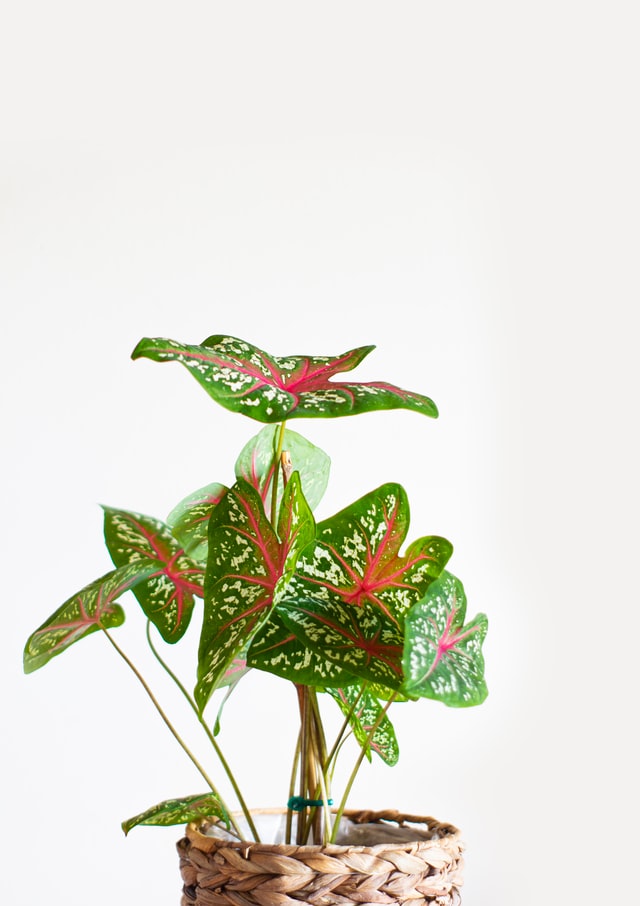
Photo by Rui Silvestre on Unsplash
Are Caladiums hardy plants?
Yes, Caladiums are hardy plants and can be grown in zones from USDA Zone-hardiness zones 9-11 . They will not tolerate frost, so make sure to protect them from cold weather if you live in a colder climate.
You should remove the wilted leaves, but don’t remove all of the leaves when wintertime is approaching. The plant needs those last couple of leaves to feed the tuber!
What are some other common names for Caladium?
Caladium is also known as Elephant Ears, Angel Wings, and Heart of Jesus.
Plant type
The Caladium is a tuberous tropical perennial.
Leaf Types
The leaves are large, typically 12-24 inches long and broad. They can be variably colored including green, white, red, pink, or combinations thereof.
It has 2 leaf types: Fancy leaf (heart-shaped leaves) and Strap-leaf (more narrow leaves).
Humidity
The Caladium prefers high humidity, 50-70%. To prevent leaves from turning brown, use a humidifier!
Lighting
Grows in partial sun to full shade.
Are Caladiums perennials?
Most Caladium plants will die back in the Fall and go dormant, but they will come back up again in the Spring. However, there are a few varieties that are classified as perennials.
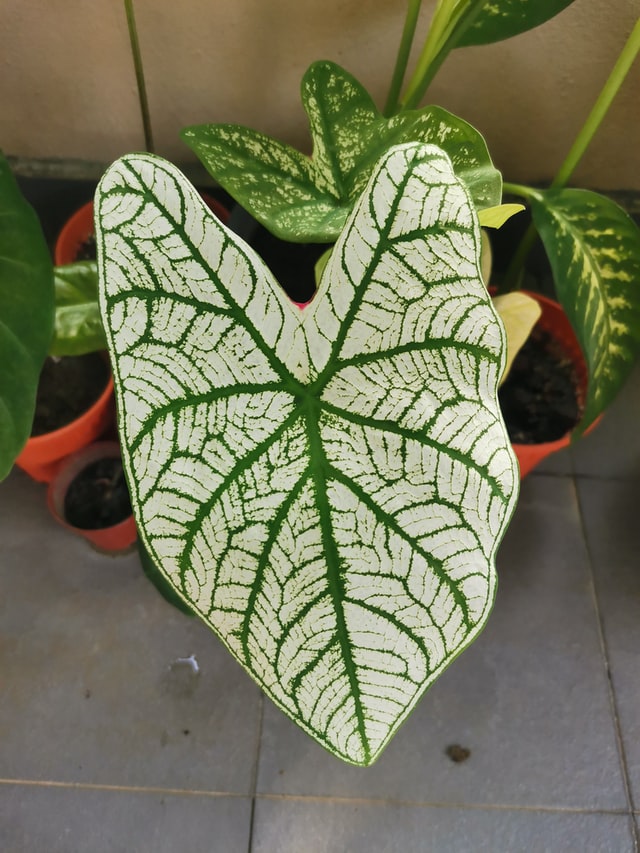
Photo by daadaa tumbuya on Unsplash
Can I plant a Caladium in a pot indoors?
Yes, Caladiums can be planted in pots indoors. Just make sure to place them in a light spot near a window.
Is a Caladium a good indoor plant?
Yes, Caladiums are good indoor plants. They require a lot of light, so place them in a spot near a window where they will get plenty of indirect sunlight.
Is a Caladium an air-purifying plant?
There is no scientific evidence to support the claim that Caladiums are air-purifying plants. However, they may help to improve the air quality in your home by removing some harmful toxins.
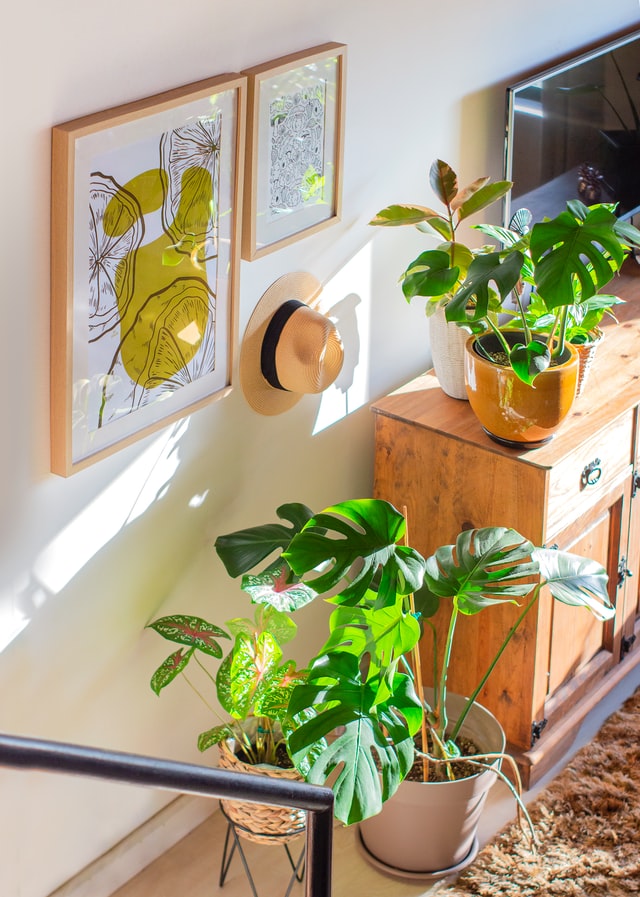
Photo by Rui Silvestre on Unsplash
Are Caladiums toxic?
Yes, Caladiums are toxic to both people and pets. Make sure to keep your beloved plant out of reach for your pets and kids that might try and eat the leaves.
Does my Caladium need fertilizer?
No, Caladiums do not need a lot of fertilizer; in fact, over-fertilizing can actually be harmful. A light application of a balanced fertilizer once or twice a month should be enough in Summer.
What are some common problems with growing Caladium?
Some common problems with growing Caladium include leaf spot, rot, and pests such as aphids, spider mites, and whiteflies. If you notice any of these problems on your plants, take action right away to get rid of them.
Can I move my Caladium outdoors in summer?
Yes, you can move your Caladium outdoors in the summer. Just make sure to place it in a spot that gets plenty of indirect sunlight and water it regularly.
When do I need to start bringing my Caladium indoors?
Most people start bringing their Caladiums indoors when the temperature starts to drop below 50 degrees F. However, you will need to monitor the weather forecast and take your plants inside before the first frost hits.
When to repot your Caladium
If your Caladium is getting a little too big for its pot, you will need to repot it into a larger pot. You can do this anytime during the year, but it’s best to do it when the plant is not in bloom. We prefer repotting our Caladiums in Springtime.
Common pests and diseases of Caladium plants
Aphids, spider mites, and whiteflies are some of the pests that can attack Caladium plants. If you notice any of these pests on your plants, take action right away to get rid of them.
There are also a few diseases that can affect Caladiums, such as leaf spot and rot.
Remove wilted leaves
You should remove wilted leaves, since the leaves of the Caladium plant are very fragile and will turn brown very quickly. Remove those leaves to get a healthy plant.
Does a Caladium plant flower?
Yes, a Caladium plant flowers sometimes.
How to propagate Caladium plants
If you want to propagate your Caladium plants, there are a few methods you can use. You can divide the bulbs, take stem cuttings, or plant seeds.
My Caladium has brown leaves, what do I do?
Remove the wilted leaves, but don’t remove all of the leaves when wintertime is approaching. The plant needs those last coupe of leaves to feed the bulb!
You might be over-watering or under-watering your plant. Also check if your Caladium is getting direct sun light, the leaves might be burning!
My Caladium leaves are turning green
Are the beautiful pink and white marks dissapearing from your Caladium plant? That’s a clear sign of a light deficit. Move your plant to a much more sunny location (but again: avoid direct sunlight please).
What do Caladium plants look like?
Caladium plants have large, heart-shaped leaves that can be green, white, pink, or red. They typically reach a height of about 18 inches and make a beautiful addition to any garden.
Where can I plant Caladiums?
Caladiums can be planted in the ground or in pots. When planting them in the ground, make sure to choose a spot that receives partial sun or shade. When planting them in pots, be sure to use a potting soil that drains well and place the pot in a location that receives either partial sun or shade.
How to combine my Caladium plant with other plants
Caladium plants can be combined with other plants in the garden to create a beautiful display. Some good plant combinations include hostas, ferns, impatiens, snake plants and begonias.
Are Caladiums hardy?
Yes, Caladiums are hardy plants and can tolerate temperatures down to about 30 degrees Fahrenheit.
How wide does a Caladium plant get?
A Caladium plant typically reaches a width of about 8 to 10 inches.
Is it a good indoor plant?
Yes, Caladium plants make beautiful houseplants. They require moderate light levels and should be watered regularly.
Height:
A Caladium plant typically reaches a height of about 18 to 24 inches.
Botanical name:
Caladium bicolor, syn. Caladium x hortulanum
How to prune a Caladium plant
You should only prune a Caladium plant if it is necessary. For example, if you are trying to shape the plant or remove dead leaves, you can prune it with sharp scissors. Be sure not to over-prune your plant, as this will weaken it.
Can you propagate a Caladium from cuttings?
Yes, you can propagate a Caladium from cuttings. To do this, take a stem cutting from the plant and allow it to dry for a few days. Then, place the cutting in potting soil and water it regularly.
What is the best time of year to transplant a Caladium?
The best time of year to transplant a Caladium is in the spring.
How long does it take for a Caladium bulb to grow?
It typically takes a Caladium bulb about six to eight weeks to grow.
Do Caladiums propagate in water?
Yes, they do.
Rooting a Caladium leaf in water
If you want to propagate a Caladium leaf, you can do so by rooting it in water. To do this, take a stem cutting from the plant and allow it to dry for a few days. Then, place the cutting in water and change the water regularly. The leaf will start to grow roots after a few weeks.